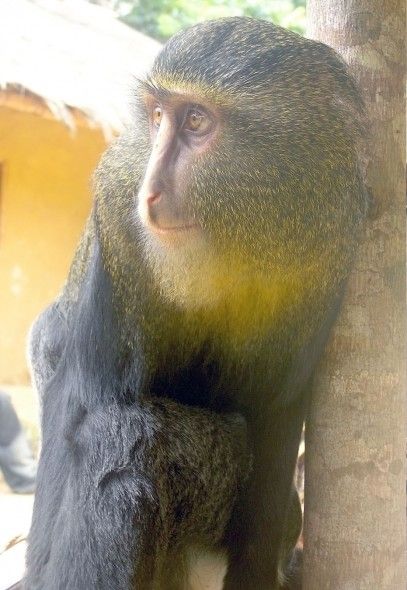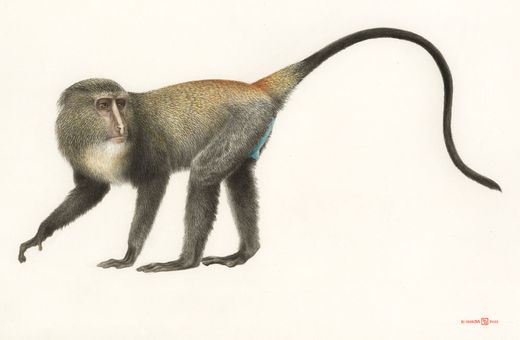It is only the second new species of African monkey discovered in the last 28 years, according to PLOS ONE.
"The first lesula found was a young captive animal seen in 2007 in a school director's compound in the town of Opala in the Democratic Republic of Congo," the journal said in a news statement. "The young monkey bore a resemblance to the owl faced monkey, but its coloration was unlike that of any other known species."
Since the initial sighting, researchers report in their PLOS ONE paper, the lesula was also found in the wild, where biologists were able to observe its behavior and ecology and determine its genetic and anatomical distinctiveness. The monkey has been assigned the scientific nameCercopithecus lomamiensis.
The new monkey's range covers one of Congo's last "biologically unexplored" forest blocks, the PLOS ONE statement said, adding that although its range is remote and only lightly settled at present, the lesula is threatened by local bush meat hunting.
"The challenge for conservation now in Congo is to intervene before losses become definitive," say the Lukuru Foundation's John and Terese Hart, who led the project. "Species with small ranges like the lesula can move from vulnerable to seriously endangered over the course of just a few years."
Florida Atlantic University (FAU) Assistant Professor of Anthropology Kate Detwiler was part of a research team that discovered Cercopithecus lomamiensis. She was the corresponding author for documentation of the new species and with colleagues at New York University she led the genetic analyses that determined that the lesula is a new species of monkey, genetically distinct from its closest relative, the owl faced monkey.
"We are very lucky that we found the lesula while there is still time to save it."Detwiler traveled to the Congo this past summer to see the species in its habitat, a 6,500-square-mile forest between the Lomami and the Tshuapa Rivers in the central part of the country. "After searching for several days in the most densely populated lesula habitat, I finally got a glimpse of the species on the last day in the forest," Detwiler said in an FAU news statement. "After the excitement of confirming the new species in the genetics lab, the chance to see the lesula in its natural habitat was especially gratifying. The fact that we are just finding a new species of primate in this area of the Congolese rain forest in the 21st century indicates that there is still so much to learn. We are very lucky that we found the lesula while there is still time to save it, and the discovery fuels the drive to raise awareness about and support for conservation of this incredibly diverse ecosystem."
The lesula is seriously threatened by uncontrolled commercial bush meat hunting that has expanded into the species' range over the past decade, FAU said in its statement.
"The challenge for conservation now in the Congo is to intervene before losses become definitive," said Lukuru Foundation's John and Terese Hart. "We are asking people not only to stop hunting in the area that will become a national park, but also to change their hunting behavior and to not hunt the lesula and other endangered species in the adjoining buffer zones as well. We have seen initial willingness, but there will have to be economic alternatives."
FAU's news statement said that a significant area of the new species' known range is now proposed as a new protected area, the Lomami National Park. "This will be the first national park established in the Congo through consultation with local communities from the outset," the statement added.
Citation: Hart JA, Detwiler KM, Gilbert CC, Burrell AS, Fuller JL, et al. (2012) Lesula: A New Species of Cercopithecus Monkey Endemic to the Democratic Republic of Congo and Implications for Conservation of Congo's Central Basin.PLOS ONE 7(9): e44271. doi:10.1371/journal.pone.0044271
The research was supported by Arcus Foundation (http://www.arcusfoundation.org/), United States Fish and Wildlife Service (http://www.fws.gov/grants/ ), a grant from Edith McBean, Abraham Foundation (http://abrahamfoundation.org/cms/), Margot Marsh Biodiversity Foundation Grant, and a Gaylord Donnelley Environmental Postdoctoral Fellowship from the Yale Institute for Biospheric Studies (http://www.yale.edu/yibs/programs_donnelley.html).





Reader Comments
to our Newsletter